The Give and Take of Cutting Knockout Performances for Director David O. Russell
Martin heads to the Academy Awards ceremony on February 27 with her first nomination for Best Film Editing. She talked to us about how she and Russell balanced the story of two very different brothers-performed with vastly different acting styles-and kept Christian Bale’s Dicky Eklund from being too much of a good thing.

Pamela Martin: (She laughs). First of all, all of the performances in this film were excellent. And by the way, the person playing Mickey O’Keefe, the trainer who is also a cop, that’s the real Micky O’Keefe playing himself in the movie. It was amazing-when I got into dailies, I kept asking, ‘Who is this guy?’ Where have I seen him before? He must be some great character actor.’ His performance, recreating what he lived through, was amazing. Mark Wahlberg obviously took the more understated role in the film, it’s not a flashy role, but he did it so well and beautifully. Christian Bale transformed himself. Amy, Melissa, and Jack McGee, who played the father, were all fantastic. The tricky thing is, given that this movie is about two brothers, is finding the right counterpoint between the two. It’s not entirely a performance issue. Because Dicky, Christian Bale’s character, is so big and so much in the forefront, we had to tread lightly. You had to find the right balance in the edit so the audience follows both brothers and Micky doesn’t get completely overshadowed by the story of Dicky. Also, you don’t want to overdose on Dicky, because he’s a lot to take in. In many instances, less was more. Melissa Leo, who is a method actress, also transformed herself. In the editorial process-and this would happen with any larger-than-life character like Alice and Dicky-you have to pull them back a bit, so it doesn’t become too overbearing or mess with the story.
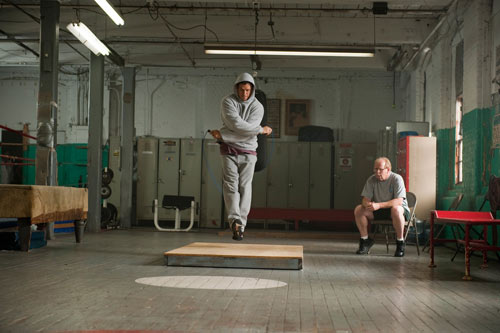 Mark Wahlberg as Micky Ward
Mark Wahlberg as Micky Ward
So how did you choose between takes, or even whole scenes?
It wasn’t so much about choosing between takes as it was using the material in moderation. The first cut of the movie was three hours long, so a lot of amazing scenes ended up on the cutting room floor. We had to find the right balance and being able to follow the story of both brothers with equal weight.
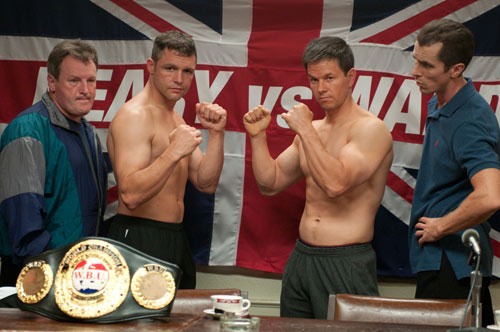
Wahlberg with Christiane Bale as Dicky Eklund
What was is like working with director David O. Russell ? Does his reputation for control on the set extend into the edit suite?
I cut David’s first movie, Spanking the Monkey, in 1993 [it was released in 1994]. It was the first full-length feature for both of us. We shot it on film in his apartment. When you had to cut on film you would just discuss to death everything and anything before you would tear apart your film cut because it’s a lot of labor. Now, working on the Media Composer, it’s so incredibly fast. If you have an idea, even a far-out one, you just do it. In terms of his direction, I think he gets excellent performances out of his actors because he pushes them on set and gets them out of their comfort zone. He relies on a lot of improv as well. Things don’t get over-rehearsed, so that’s the beauty in what he does on set. In terms of editing, I didn’t go to Lowell, Massachusetts, for the shoot, they did not let anything be cut while they were shooting. Sometimes David had a very strong idea of how he wanted something put together and would give me very detailed instructions. At other times, not. As a general rule, I’d know that I was supposed to look at his circled takes just to get a feel for what types of performances he liked. Then I would put it together myself. When he came back to LA after principal photography, I’d see him much more.
His offices are right across the hall from mine and he’d be in and out of the edit suite a lot. Sure, you always talk about the edit a lot with any director on any project. Then they go away and you get to work. They come back in. As you get closer to the final film you see your director more often because the changes as much faster. You’re fine-tuning. Typically, we’d discuss a scene and he’d say, “this is more what I’m after,” or “how can we do this differently or restructure the scene.” It’s a very cooperative process.
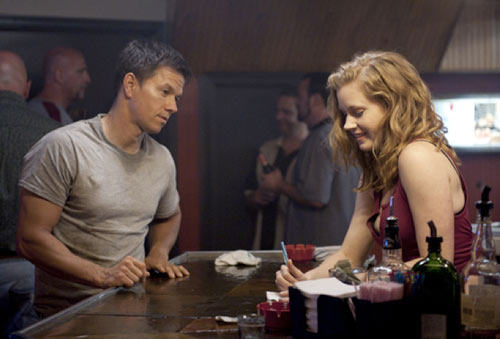
Wahlberg with Amy Adams as Charlene Fleming
You cut this on Avid Media Composer. What version did you use on the film?
I defer to my assistant editor, Terel Gibson, who dealt with all the version stuff. He started the show as first assistant editor and moved up to additional editor during the edit. He set things up for me and did a lot of digital dust and gate hair removal throughout the edit. But it happened while I worked; it was never an issue in terms of creative decisions. [Gibson upgraded all of the HD video, transferred to HDCAM-SR tape for cutting in 24 fps with DNX36 HD (1920 x 1080), as Martin edited on Media Composer 3.1.3.]
Basically, I show up to work and say, “Give me the Avid.” I really pay no attention to it because I don’t have to. I worked on the first movie that had ever cut on an Avid, Ang Lee’s second film, The Wedding Banquet. Tim Squyres and I went into Avid’s offices and they gave us a tutorial and Tim turned to me and said, “Do you know how to use a Macintosh?” I told him I did and he let out a big sigh of relief. I read the manual and put the computer together and we just started working. In those days, I could put it together and take it apart in my sleep but now I couldn’t do it to save my life. But I’ve been using the Avid for so long that I just don’t pay as much attention to the upgrades. For me, it’s like playing the piano. It’s just a fluid extension of my body. I’ve got all my preset buttons where I like them and I don’t think about how I’m going to do it, I just do it. I do cut TV commercials in between projects and they usually use Final Cut but I always get an Avid room.
What about new features that make you more nimble?
I’m very fast, so new features in subsequent versions don’t necessarily affect my speed anyway. We had a scene in the film where Dicky is coming off of drugs while he’s in prison and there are all these images on the wall. My second assistant was quite good manipulating the visual effects plug-ins that come with Media Composer. We’d tell him what we were going for and what we liked and I had someone in another room putting that stuff. Animatte is a great tool within MC and I only learned to use it in the last two years. I used it a little bit during the rough cut on this film. I’ve used it much more on other films I’ve cut and it’s a godsend to be able to gracefully split screen if something’s not right and combine two different takes of actors together that you may not have otherwise been able to do. But The Fighter is a very naturalistic, gritty film. The second assistant used a number of superimposition tools and I was just punching it in. Personally, the kind of films I work on are not heavy effects-laden movies, so I tend not to use a lot of the latest bells and whistles.
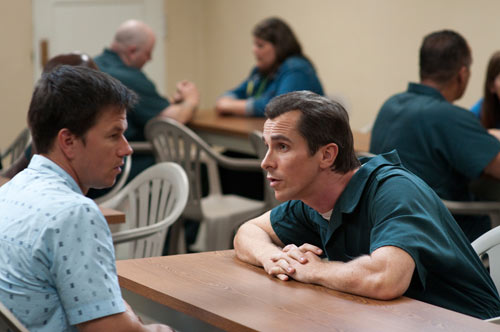
Walhberg’s Micky visits Bale’s character Dicky in prison
Speaking more literally about bells and whistles: What was it like cutting to the complex soundtrack, dialogue and audio in the film?
The most important thing on this film, aside from all the picture cutting, was I was cutting with 24 tracks of sound, especially on the last reel of the film during the last six months of the process. We got very, very deep into the sounds effects and sound design very early on before we handed it over to the sound team. Being able to go into trim mode and edit that many tracks was fantastic, because we were able to hone in on what was working and what wasn’t on the sound design. When we handed it over to the sound department, we had very specific directions for them creatively because we’d already tried it. We had an amazing music editor named Philip Tolman. He’s a collage artist who really nailed it when we needed our temp score. He would take pieces from different movie scores and blend them together until we had a sound we liked. On a movie like this you don’t want to make anything melodramatic. You have to tread very lightly when it comes to the score. We had to stay more neutral than most movies do. The songs also helped. Philip found that wonderful song by The Heavy, “How Do You Like Me Now?” When he brought it to us we thought, “This is perfect.” I always cut music as I’m editing, it’s the rhythm of the scene. Dialogue, too, is rhythm and music that you weave all together as you go.
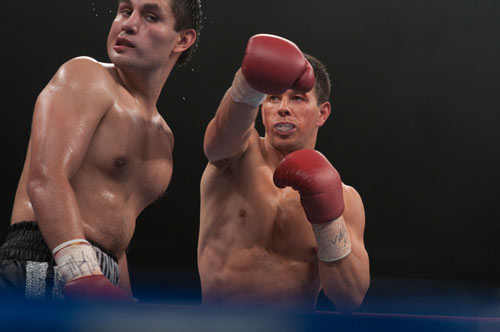
The pivotal fight scene
What was Russell’s vision for the sound design overall?
Keep it gritty, not too polished. We did record ADR and when it came to line replacements, we always favored the original recording, even if it was messy. A lot of the other ADR that we recorded were just additions to keep things fluid. On the set, everybody always overlaps everybody else’s lines. Especially on this one. That’s why it sounds like a real conversation, and the film feels so real.
Were any of the film’s various fight scenes, including the scream-fest between Amy Adams’ character and Ward’s sisters, particularly challenging?
No. I had such a wealth of material to work with. Yes, everybody overlapping everyone else but there are ways to smooth that out. I used to be a dialogue editor, so I’m not afraid of that. There’s always a lot of fixing to do on that front. But that’s also why the film has such a great life of its own.
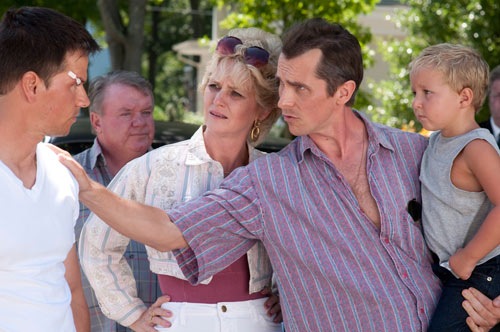
Melissa Leo as Alice Ward with her far-flung family
Do you have a favorite scene or one you’re especially proud of?
I have a few, for all different reasons. I love the opening credits sequence of Micky and Dicky walking through town, and Dicky’s getting high-fives from everyone. I also love the scene in the crack house intercutting with the Sugar Ray fight. I love the whole Led Zeppelin section when Dicky goes on his crime spree. Originally, those were all shot as separate scenes and ultimately ended up being this giant montage that worked so beautifully with the right music. I love the fight scenes, the turning-point scenes when the family is watching the documentary on TV and Dicky’s watching from prison and the effect it has on everyone.
Where you surprised by all the nominations?
We had three test screenings of the film and it tested very, very well. We all knew, even before we saw the final cut of the film that this was obviously something very special. We tested it and we saw how much audiences really loved the movie, particularly our second and third test screening after we had done some major editorial work in the final fight of the movie-we had audiences jumping up out of their seats during the final fight cheering. All I can say is we love the film, we love the characters, all based on real people, and David has a lot of love for the real guys and for the city of Lowell and all the people in the film, some of which played themselves. You never come out of a film thinking about the nominations. All you know is you’re proud of it and you love the work you’ve put out there. And if you’re happy with the movie, that’s all that really matters. All this awards stuff is just icing on the cake. I feel really blessed and I’m thrilled that so many people are going to see it and that they like it.
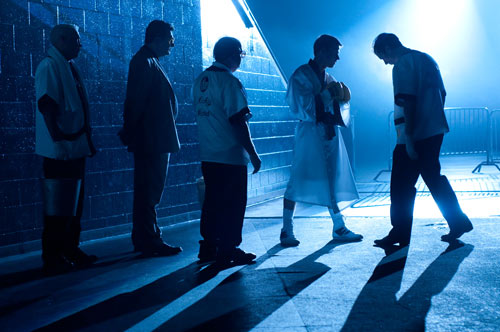

Did you enjoy this article? Sign up to receive the StudioDaily Fix eletter containing the latest stories, including news, videos, interviews, reviews and more.










Leave a Reply